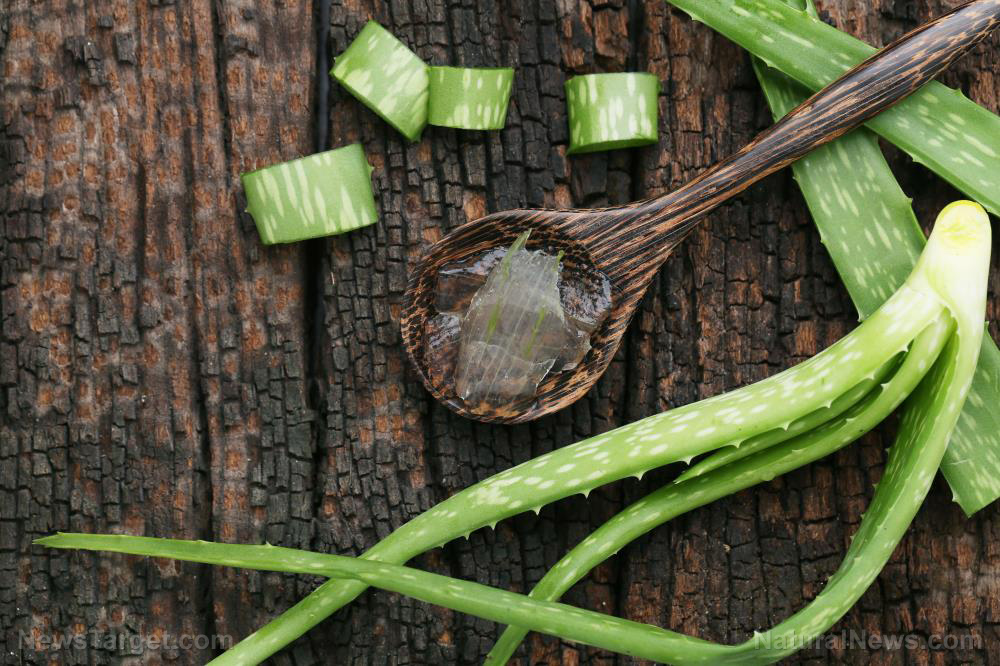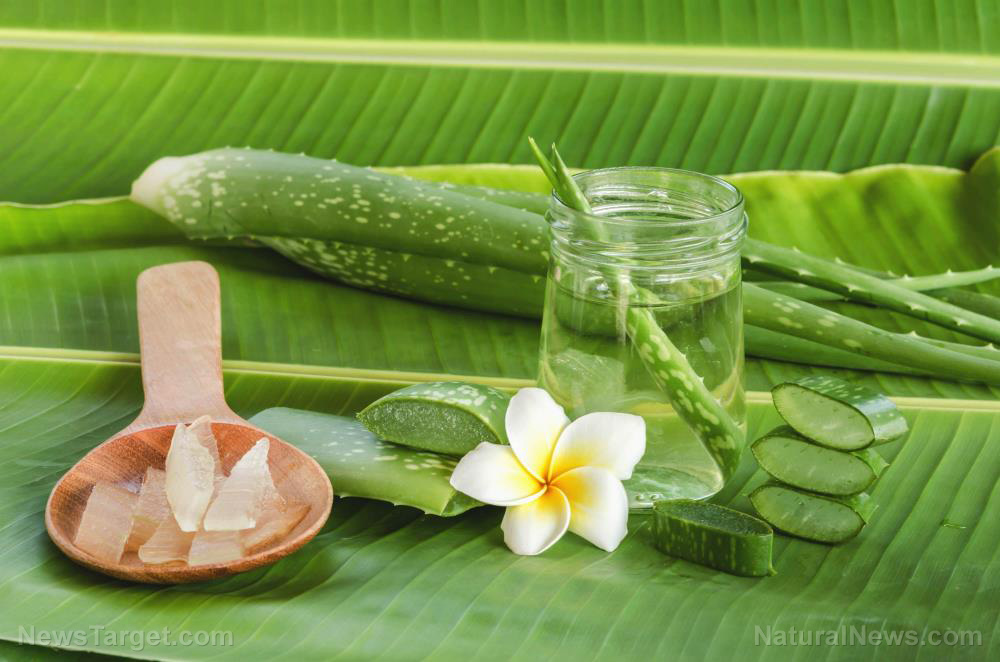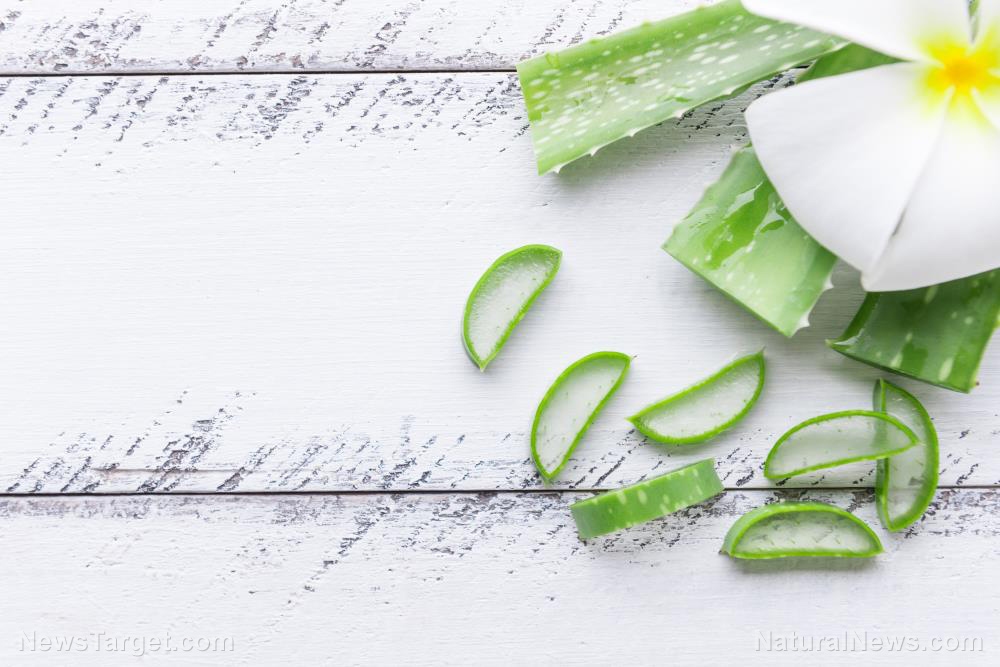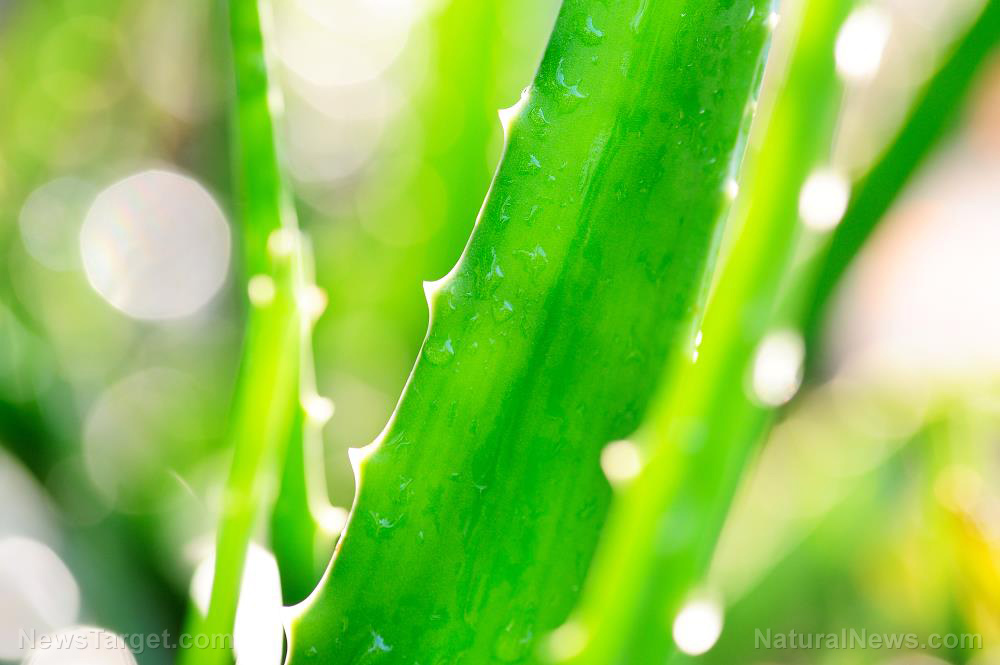
Known as being a "plant of immortality", the aloe vera plant is a succulent that has been used for its healing properties for the past 6,000 years, making it one of the oldest superfoods. With its versatility as a natural remedy, it is a common ingredient found in moisturizers, skin care products, juices, capsules and more. Packed with antioxidants and vitamins A, C and E, aloe vera can protect you from free radicals and lower your risk of cancer, heart disease, and other ailments. It is helpful in treating a wide variety of problems from skin conditions to digestive issues. (Related: Aloe vera helps reverse cancer and AIDS.)
The plant's spiky leaves have two useful parts: the gel and the aloe latex. The gel is clear and odorless. It is the innermost part of the plant and the safest part to be taken orally. It can also be applied directly to the skin to soothe burns or rashes. The aloe latex is a yellow juice or pulp that seeps out out of the leaves when they are cut. It can be found in the outer part of the plant. The aloe latex also has medicinal properties. However, caution must be heeded in taking it orally. Ingesting over one gram of aloe latex a day for several days can lead to kidney damage. That said, the laxative properties of the aloe latex can be used to treat constipation.
Constipation is one of the ailments that can be alleviated with the use of aloe vera. The plant is a natural laxative due to the anthraquinones that it contains. Anthraquinones are organic compounds and the aloe vera plant contains no less than 12 of them, chief of which are aloin and emodin. Aloin is found in the aloe latex so it must be taken responsibly, but it does give aloe vera its laxative properties to aid in healthy bowel movement. Emodin has a strong stimulant-laxative action and it can work as antibacterial and antiviral agents.
Proper aloe vera application
- The spiky leaves of the plant can be extracted to make a thick gel paste. This raw gel is concentrated and has a bitter taste so it is best to give it a flavorful twist. Take two tablespoons of the gel and mix it with any fruit juice of your choice. Citrus juices are recommended.
- The aloe vera gel also comes in a capsule form which is available in most health food stores. These can be used for softening stools to ease movement in the digestive tract. In case these capsules contain aloe latex, it is very important to strictly follow the recommended dosage.
- Aloe vera juice and aloe vera water are less concentrated than their gel form, and therefore, more palatable. Drink them regularly to alleviate chronic constipation and prevent fungal infections.
- An aloe vera detox formula can be most helpful in flushing out unwanted and harmful toxins from the colon. These formulas are normally taken several times a day over the course of a few weeks.
Aloe vera is but one kind of superfood and there are many others out there. If you want to learn more about other useful superfoods, you can visit Superfood.news.
Sources include:
Please contact us for more information.























